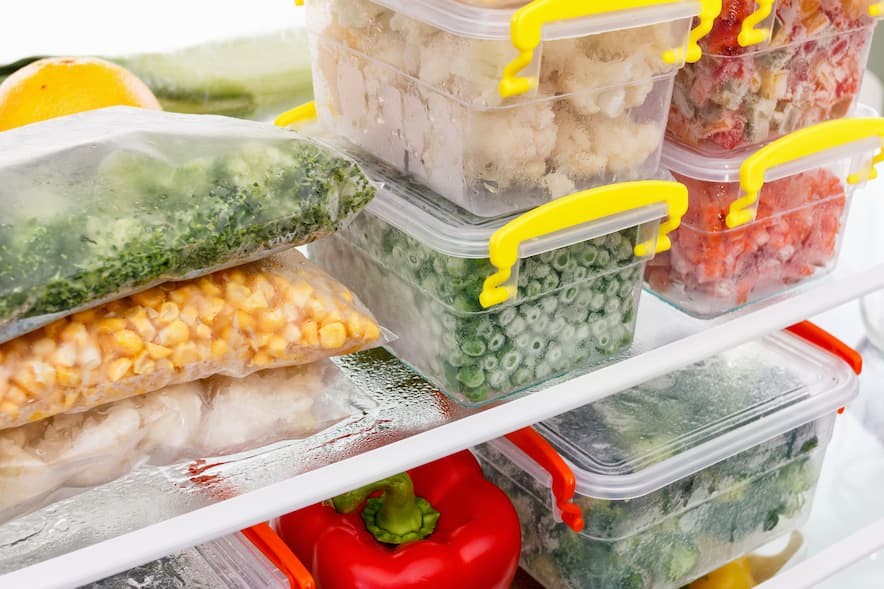Maintaining food safety is crucial in the food service industry and at home. Ready-to-eat (RTE) Temperature Control for Safety (TCS) foods require special attention. Proper storage, especially after cooling, is vital to prevent foodborne illnesses. Understanding how to store these foods correctly ensures their safety and quality.
Understanding Ready-to-Eat TCS Foods
Refrigeration significantly slows down bacterial growth, but it doesn’t eliminate it entirely. Therefore, RTE TCS foods need to be carefully managed, particularly concerning time and temperature. If RTE TCS food is intended to be stored for more than 24 hours, it must be date-marked to indicate when it should be used by or discarded. This is crucial because even in refrigerated conditions, certain bacteria like Listeria monocytogenes can grow, posing a health risk.
Key Takeaways for Safe Storage:
- Date Marking: RTE TCS foods stored for over 24 hours must have a use-by or discard date.
- 7-Day Rule: Refrigerated RTE TCS foods can be stored for a maximum of 7 days.
- Visibility: Date markings must be easily visible, clear, and understandable to all employees.
- Refrigeration Isn’t Foolproof: Refrigeration slows, but doesn’t stop bacteria growth, necessitating strict time-temperature control.
What are Ready-to-Eat TCS Foods?
RTE TCS foods are those that support the rapid growth of bacteria and require temperature control to remain safe. Common examples include:
- Eggs and egg products
- Raw meat, meat products, and poultry
- Protein meat alternatives
- Milk and dairy products
- Cooked rice or pasta
- Leafy greens and fruits
- Baked potatoes and potato dishes
Alt text: A variety of TCS (Temperature Control for Safety) foods displayed in a commercial kitchen, highlighting the need for careful temperature management.
Foods Exempt from Date Marking
Some foods are exempt from date marking due to their inherent properties or how they are handled. These include:
- Deli salads consumed immediately
- Fermented dairy products (yogurt, sour cream)
- Salted fish and dry foods
- Fermented, processed meats (sausages, salami)
- Certain cheeses
It’s essential to train your team on which foods require date marking and which do not. A robust monitoring system helps track food items and their corresponding dates, ensuring safety.
Why Date Marking is Essential for Ready-to-Eat TCS Foods
Date marking is a critical preventive measure. It helps monitor the refrigeration period and ensures food safety. TCS foods must be stored at controlled temperatures to maintain quality and prevent bacterial growth. Keeping foods out of the temperature danger zone (40°F to 140°F or 5°C to 60°C) is paramount.
Even in refrigeration, some pathogens, like Listeria, can thrive. Listeria can cause Listeriosis, leading to symptoms such as muscle aches, diarrhea, and fever. Vulnerable populations are particularly susceptible to this foodborne illness. Therefore, adhering to the 7-day storage rule for RTE TCS foods is crucial.
Best Practices for Date Marking
Implementing an effective date marking system is crucial for food safety. Here’s how to do it right:
- Erasure-Proof Marking: Use color-coded stickers or waterproof labels marked with permanent markers. Avoid labels that can easily be washed off.
- Clear and Visible: Ensure dates are legible and placed in a visible spot on the product.
- Uniformity: Use a consistent date format (e.g., “date-month-year” or “month-date-year”) to avoid confusion. Clearly communicate the chosen format to your team.
Remember, RTE foods can only be kept for a maximum of 7 days at 41°F (5°C) or below. If different batches of RTE TCS foods are combined, use the earliest processing or opening date as the reference for the discard date.
How Should Ready to Eat Food Be Stored After Cooled?
Regardless of whether they are TCS foods, all ready-to-eat items should be stored on the top shelves of your refrigerator. This minimizes the risk of cross-contamination from raw meats or other potentially hazardous items stored below. Ensure all RTE foods are properly covered or stored in sealed containers. This includes leftovers, cooked meats, packaged foods, and prepared salads.
Understanding Date Markings
Date markings on refrigerated TCS food indicate when the food should be sold, consumed, or discarded. The marking can represent either the date of opening/preparation or the end date. Use only one format to avoid confusion.
Time Limits for Storing Ready-to-Eat TCS Foods
RTE TCS foods should only be stored for a maximum of four hours without temperature control after preparation. Beyond this, they should be discarded. Immediate refrigeration after preparation or opening is crucial to prevent food contamination. The 7-day refrigeration rule applies to maintain wholesomeness and minimize the risk of foodborne illnesses.
Employ the First-In, First-Out (FIFO) method to prevent food items from being forgotten in the refrigerator. If a refrigerated TCS food is moved to the freezer, the storage timer stops. Upon removal from the freezer, the food is still considered refrigerated for the number of days it was initially refrigerated before freezing.
Digital Solutions for Monitoring TCS Food
Monitoring the shelf life of RTE TCS foods can be challenging, especially in busy food establishments. A digital Food Safety Management System (FSMS) like FoodDocs can help streamline this process. These systems offer smart notifications to remind food handlers about expiring TCS foods, reducing waste and ensuring safety.
Alt text: Animated GIF showcasing a digital food safety checklist on a tablet, demonstrating ease of use and real-time monitoring capabilities.
Digital FSMS solutions also provide features such as:
- Automated monitoring forms for temperature and storage times
- Real-time dashboards for tracking food safety operations
- Customizable checklists and procedures
Conclusion
Proper storage of ready-to-eat food after cooling is essential for maintaining food safety and preventing foodborne illnesses. Adhering to date marking guidelines, maintaining proper refrigeration temperatures, and utilizing digital monitoring systems can significantly enhance food safety practices in any food establishment. By prioritizing these measures, businesses can protect their customers and uphold their commitment to providing safe, high-quality food.


